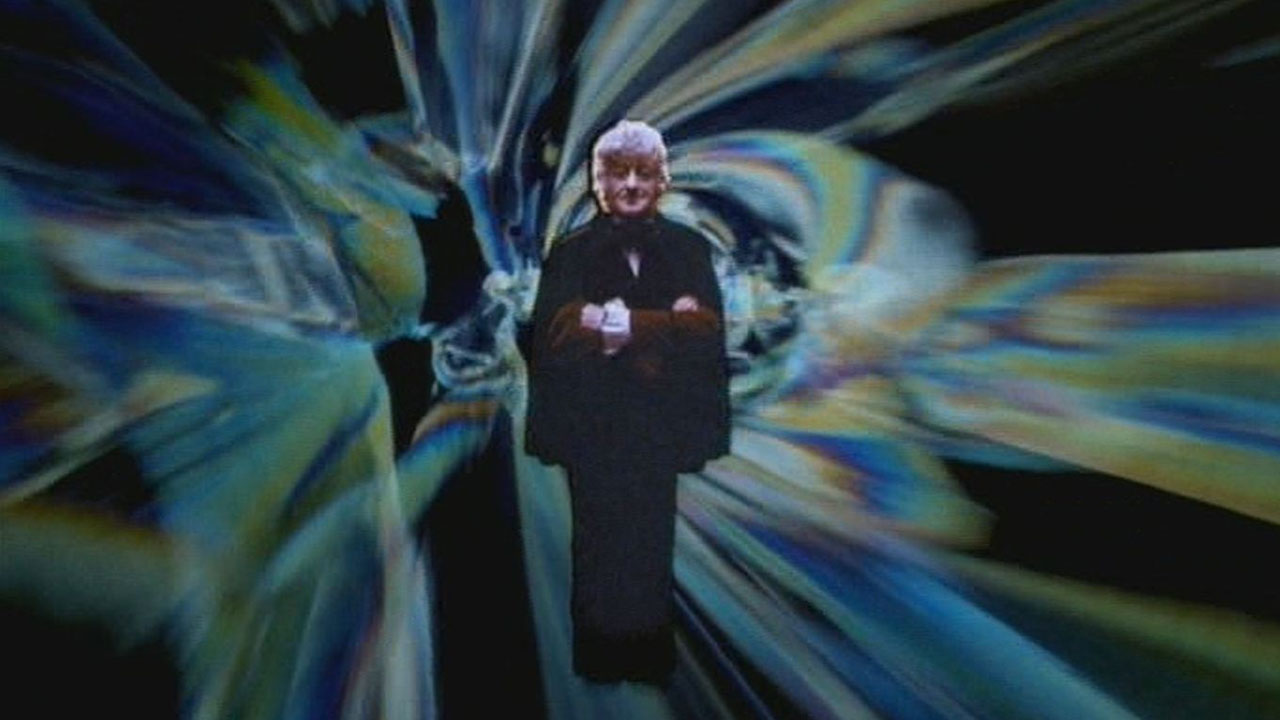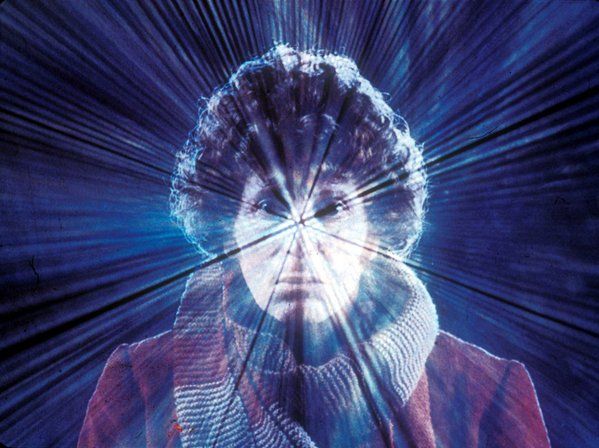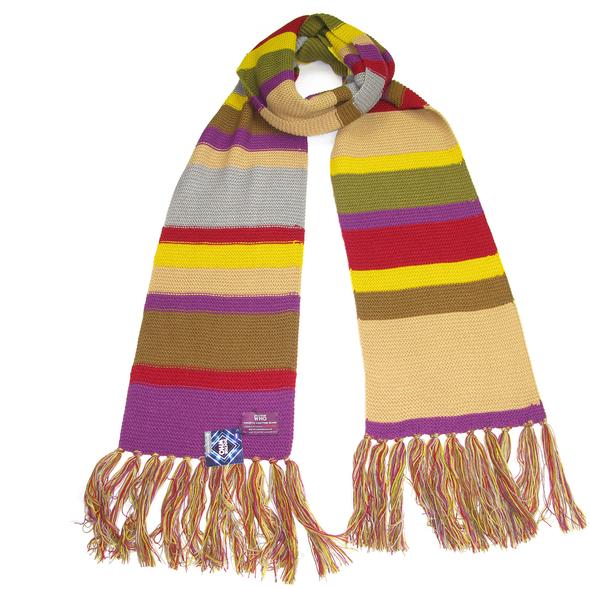The Doctor Who title sequences are some of the most iconic in the history of television, and their influence is more far-reaching than you might realise…
It’s hard to say with any certainty that the first of the Doctor Who title sequences directly inspired Stanley Kubrick’s famous film 2001: A Space Odyssey, but it’s impossible to ignore the connection. Indeed, one of the film’s most iconic sections – ‘Jupiter and Beyond the Infinite’ – involves a psychedelic trip into the unknown through passages of swirling patterns and colours.
Sound familiar? It should, because the same effects were used for the first three Doctor Who title sequences. Known as video feedback (or a howlaround effect) the first Doctor Who title sequences were created by simply pointing a camera at its own monitor to generate feedback. The result was an unusual collection of patterns and shapes that had an ethereal, dream-like quality to them, and this was a vibe that was totally in-keeping with the experimental zeitgeist of the 1960s.
Certainly, the ‘Jupiter and Beyond the Infinite’ segment of 2001: A Space Odyssey is ethereal and dream-like, and it does hint at a voyage through space and time – not unlike Doctor Who.
And let’s not forget that the very first of the Doctor Who title sequences was created in 1963, some five years before 2001: A Space Odyssey. And given the explosion in Doctor Who‘s popularity in the mid 1960s, it’s reasonable to assume that our favourite Time Lord could have caught Kubrick’s eye. Could the very first of the Doctor Who title sequences have inspired the filmmaker when shooting ‘Jupiter and Beyond the Infinite’? It’s possible. Certainly, the segment could pass for a Doctor Who title sequence if it were to be dubbed with a little Delia Derbyshire!
Plus, it’s not too dissimilar to a Doctor Who title sequence that emerged some six years later. The sequence in question was employed for the Third Doctor’s last season, which was later adapted for the Fourth Doctor’s first. Similar in style to the ‘howlaround’ Doctor Who title sequences of the 1960s, these newer renditions used something called a slitscan technique which, coincidentally, had originally been developed for ‘Jupiter and Beyond the Infinite’ in 2001: A Space Odyssey! Keeping up?

But what is a slitscan technique? It’s a bit hard to explain, but speaking on the Ravensbourne University London website, its designer Bernard Lodge wrote:
“The computer-controlled rostrum camera exposed one single frame at a time while tracking back up its column and filming a back-lit outline version of the shape (the slit) with which the tunnel effect was to be generated, such as a circle, a diamond or even the shape of something or someone.
“This was repeated for every frame, with the artwork behind the slit moving incrementally on each frame to generate the moving tunnel with the desired shape. In this sequence a circular slit made a circular tunnel, an outline slit of the police telephone box made a TARDIS-shaped tunnel and a diamond slit created a diamond-shaped tunnel for the new logo at the end of the sequence. Each frame took about 30 seconds to expose.”
Lodge’s slitscan sequence proved so ground-breaking and influential that it was later used as a ‘best in class’ example to inspire other designers at the BBC.
And the sense of movement achieved by Lodge is something that would go on to inspire many of the Doctor Who title sequences that followed. The most obvious example is the one that Russell T Davies commissioned for the show’s 2005 revival, which showed the TARDIS travelling down a strange passage of swirling colours that was supposed to represent the time vortex, very similar in style to the one created by Lodge. And this was in turn adapted by showrunner Steven Moffat when he took over the Doctor Who reins, morphing Davies’ time tunnel into a passage of rolling thunder clouds.
But it’s important to remember that both of these Doctor Who title sequences took inspiration from the version that was used in the Doctor Who TV movie in 1996, which was again inspired by Lodge’s sequence.

Of course, none of this would have been possible without the strides that had been made in computer-generated imagery, and again Doctor Who can take the credit for being at the forefront of this revolution. In 1987, the first of the CGI Doctor Who title sequences made its debut, and whilst it may not have been the first CGI title sequence in the history of television, it certainly comes high on the list.
And remarkably, this title sequence still holds its own some 35 years later, with the exception of the tumbling asteroids which look rather artificial and smooth by today’s standards. Of course, these days all of the Doctor Who title sequences are CGI endeavours, but it’s important to note that, in 1987, this was quite the revolution and was by no means an easy thing to achieve.
Moreover, technology has now reached the point where fans can make their own Doctor Who title sequences and have them seen by the production team. This was certainly the case for fan Billy Hanshaw, who devised his own concept for a Twelfth Doctor title sequence. After it had been uploaded to YouTube, it caught the eye of showrunner Steven Moffat, who enlisted Hanshaw to work with the Doctor Who production team to adapt his work for the series itself.
Thus, we find ourselves in the unusual situation of Doctor Who title sequences inspiring fan sequences which inspire Doctor Who title sequences! Wibbly wobbly, timey wimey…
It’ll be interesting to see what direction the Doctor Who title sequence takes for the 60th anniversary. Will it go full-retro, or re-use an old classic (the 50th anniversary episode ‘The Day of the Doctor’ re-used the William Hartnell titles.) Or will ‘new’ showrunner Russell T Davies take inspiration from the title sequences of his own era and produce something with a 2005 vibe? We’ll have to wait and see.
In the meantime, which is your favourite Doctor Who title sequence? And which do you think has been the most influential? Let us know in the comments below.

Doctor Who scarf – order now from the Lovarzi shop!








I think my favourite pattern was the Jon Pertwee first title sequence. The red and black and green diamonds were iconic. Also iconic was the closing title sequence which re-worked the in and out movement of the initial few seconds of the opening titles. Fascinating it would be to find out yet more about the “pattern” as I tend to call it!!
It’s a good one! It’s the first one I remember seeing.